Each PBL Fellow documented an issues-based PBL unit throughout their fellowship year. The projects spotlighted below are windows into our work. We’ve given ourselves permission to dispose of carefully crafted, laminated lessons and share with you our works-in-progress as we continually struggle to improve rigor, relevance, and student engagement. We hope you find something here to help you bring these ideas into your classroom!
Jump to 2017-18 Fellows’ Projects
Jump to 2016-17 Fellows’ Projects
2018-19 Fellows’ Projects
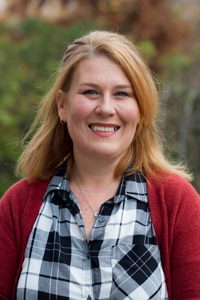 |
RESPONSIBLE CITIZENS SPEAK UP FOR RENEWABLE RESOURCES Kris Velez, West Clayton Elementary School, Johnston County Schools 3rd Grade PBL Science/ Social Studies 28 days Driving Question: How do we, as third graders, communicate to our community the importance of choosing renewable resources over nonrenewable resources, whenever possible, and making energy efficient choices in our daily lives? Summary: Third grade standards for social studies require students to explain how citizens can responsibly participate in their community in a variety of ways. Students are expected to learn that responsible citizenship often requires citizens to develop skills and knowledge concerning civic practices that are gained through education or life experience, and that being a responsible citizen means balancing individual rights with personal responsibility. In third grade, students also learn that responsible citizens consider the well being of their environment and help make positive changes in the community. Knowledgeable citizens often make choices to help preserve and protect a community’s natural resources. Hopefully, students also learn that there are no age constraints on effective civic participation within a community. Essentially, they learn that their voice matters! In science, third grade students are required to know what energy is, where it comes from, the different forms it takes, and how heat energy is transferred. I choose for my students to also learn about responsible energy use and alternative forms of energy. Through this Project Based Learning unit, students will learn how citizens contribute and make a difference in their community. Students will engage in the I AM process of civil action by becoming informed, taking action, and maintaining their message. Students will become informed on the issues surrounding the use of fossil fuels, they will take action by creating a Public Service Announcement in a style of their choosing, and then maintain their message by sharing it with members of our Clayton community in a culminating event- Brain Power: the Ultimate Renewable Resource.Links: Project Design |
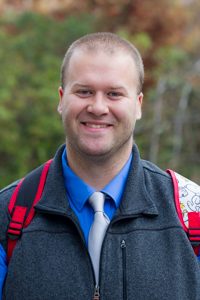 |
EFFECTS OF HABITAT FRAGMENTATION OF THE CROATAN FOREST Wayne Muller, Havelock Elementary, Craven County 5th Grade Science 15+ days 5.L.2-Understand the interdependence of plants and animals with their ecosystem. 5.L.2.1-Compare the characteristics of several common ecosystems, including estuaries and salt marshes, oceans, lakes and ponds, forests, and grasslands. 5.L.2.2-Classify the organisms within an ecosystem according to the function they serve: producers, consumers, or decomposers (biotic factors) 5.L.2.3-Infer the effects that may result from the interconnected relationship of plants and animals to their ecosystem. Driving Question: How can we as 5th graders at Havelock Elementary work to solve roadkill caused by habitat fragmentation in the Croatan Forest? As this project is completed students will be working to solve a major roadkill issue of various wildlife species (deer, opossums, raccoons, birds, etc.) that are hit by vehicles that travel along the stretch of Highway 70 through the Croatan Forest. This caused the driving question of my project to change from solving habitat fragmentation to solving roadkill due to habitat fragmentation of the Croatan Forest. Students, through the use of trail cameras that will be set up in the most heavily affected section of Highway 70 will observe time of day most animals are hit, the species that is most frequently hit, and looking to just observe animals in their natural habitat. Images captured will be uploaded to either eMammal or Candid Critters. Students will hear presentations and dialogue from Croatan Forest rangers and Department of Transportation on what they’re noticing and any databases they use to track traffic reports and the reporting process for animals that have been hit. Once all information is gathered they will create presentations of different solutions to the roadkill problem and these will be presented in a public forum help at the school where parents and various community members can attend. Students will be evaluated through formative and summative assessments and rubrics created to score presentations. |
 |
RED WOLVES CONFLICT Dawn Eagan, Rolesville Middle School, Wake County Public Schools 7th Grade Science 2 weeks Driving Question: Should we save the red wolves of North Carolina? Summary: Essential Questions:
For 30+ years, North Carolina lawmakers have been discerning the decision to invest in the revival efforts of the red wolves. Due to human persecution and habitat destruction red wolves have declined in number and are now one of our planet’s most endangered species. As a result, some red wolves were unable to find mates of their own species and began mating with the coyote. Coyotes are plentiful and do not qualify for protection under the Endangered Species Act. Unfortunately, red wolf-coyote hybrids face the same limitations. Funding and protection of the Red Wolf Revival Program comes down to determining if the red wolves are a distinct species. Rolesville 7th Grade Science students will research and analyze genetic information about the red wolves of North Carolina. By applying their knowledge of genetic concepts, students will discern if the red wolves are distinct species and deserving of funding. Students will communicate with our state representatives and/or local paper, as well as, participate in a debate that states their opinion on whether or not to save the red wolves. During the PBL, students will go on a field trip to visit red wolves, have guest speakers, and make connections about the impact of lifestyle choices on environmental conservation. |
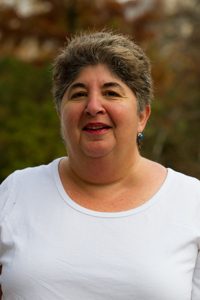 |
PLASTIC DILEMMA Judy Compton, Central Park School for Children, Durham County 4th grade, all subjects About 3 weeks Driving Question: How can we, as 10-year-olds, encourage people to use less plastic? Summary: This project is part of a bigger project that takes place over the course of each school year. This part can stand alone. It takes about three weeks to complete. This project is designed to give students engagement with and access to natural areas, particularly waterways. The goal is for students to feel invested in protecting waterways from all types of litter but especially plastics. Prior to beginning this project, students have learned about watersheds and river basins in general and about the ones in their area. Because our kids come from a large geographic area that includes at least two of North Carolina’s major river basins, we focus solely on the river basin where the school sits. With kids who I know live in a different river basin, we extrapolate at appropriate times.We began this project by learning about storm drains and following water flow from our school into the creek that runs about three blocks from our school. On a rainy day we walked the path of the storm drains, looking into them and seeing which way the water went. This part of our creek drains downtown Durham and is among the most polluted parts of the Neuse River Basin. When we reached the creek, students were shocked at the amount of trash that sat along the banks and in the creek. We planned and carried out a cleanup, recording data as part of the Ocean Conservancy’s citizen science program. Using the items they collected and working with our art teacher, students created sculptures that reflected their thinking about the amount of plastic in the creek. Students learned about plastic as a substance and about the bigger problem of plastic in our oceans. They weighed and measured the amount of trash they created each day in the classroom and at home, and came up with ways to cut down on the plastic they use. Students conducted research and wrote persuasive essays to encourage people in different ways to cut down on the amount of plastic they use, and the amount that ends up in our waterways.Students wrote a play explaining the problem and offering some solutions. They also learned how to make a podcast and wrote one of their own. It will be made public when it’s finished. |
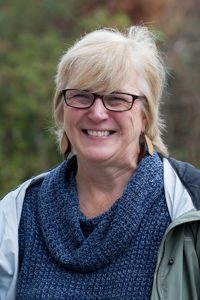 |
ELEMENTARY ENTREPRENEURS Michelle LeRoy, Penny Road Elementary School, Wake County 5th Grade Math and Social Studies The project was completed over three weeks during math instructional time. Driving Question: How can we, as young consumers and budding entrepreneurs, create a mini marketplace to explore economics concepts? Summary: Several standards taught in fifth grade math and social studies lend themselves to project-based activities that allow students to explore basic ideas of economies. Building on student interest in style and entrepreneurship, this project gives students the opportunity to design items, determine production costs by doing simple mathematical calculations, and participate in a mock marketplace. Participating in the JA in a Day Program through Junior Achievement earlier in the year, the students had background knowledge on how a business is structured. They had a basic understanding of supply and demand, and had explored pricing strategies. As we began our study of decimal operations in mathematics, the project became a way to tie together economics standards with the decimal study as well as additional math standards for graphing and algebra. Students were given the initial assignment to design a pair of socks that would be offered for sale in a mock-marketplace. Students had to factor certain design choices into the production costs. They also needed to informally survey their peers to see if certain styles would be popular. After determining final costs, each student then had to price his/her product and create a simple advertisement. A mock-marketplace was opened where two classes of students worked with a specific shopping budget to purchase socks. The students were able to review their results, which were graphed, and the prizes were awarded to the students with the highest profits.Following the initial activity, students assessed their strategies and attempted another product launch. Students worked independently on this product, which was a hat, with greater focus being given to the mathematics. In the third phase of the project, students created business teams that designed, priced, and marketed their products. In this final phase of the project, students took on specific roles (designer, project manager, accountant, marketer/advertiser) to have a better understanding of the different components of businesses. |
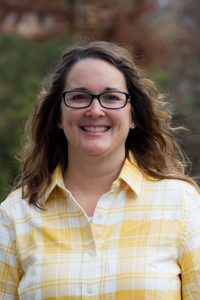 |
HERE BIRDY, BIRDY, BIRDY Jill McGowan, Millbrook Environmental Connections Magnet Elementary, Wake County 1st Grade, Environmental Inquiry Special Approximately 9 weeks, 2 times per week for 45 minutes Driving Question: How can we as 1st graders at MECME understand and support the birds in our community? Summary: In this PBL, students learn all about the birds that are commonly found on our campus and how they can understand and support them. They learn how to ID the birds, using binoculars, field guides, and an online birding app. Then using the information gathered about the size, color and location of the birds, students narrow it down to 5 birds commonly found on our campus and choose one to become an expert on. Together, students create a personalized MECME field guide outlining 5 birds commonly found on our school campus. The field guide includes a scientific drawing of their bird, distinguishing characteristics, and one fun fact about that bird. In future iterations of this PBL, students will work more closely with local Bird experts, and develop a plan to help better support the birds commonly found on our campus, in addition to the field guide. Links: Project Design |
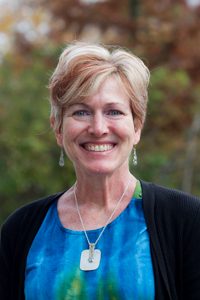 |
REFUGEE AWARENESS AND WALK FOR WISDOM Angelia Fleming, North Rowan Middle School, Rowan County 6th, 7th, 8th Grade, ELA Year-long, approximately 1 hour per day, 2 days per week Driving Question: How can we build awareness of refugees and unite our community in helping raise funds and support youth in a struggling country? Summary: As part of our refugee study, students participated in a Doctor’s without Borders interactive refugee exhibit and a Zoom conference with a former Lost Boy of Sudan. This prompted students to ask, “What can we do to help?” Students then decided to lead two community events, a Community Refugee Awareness Night and a Community Walk for Wisdom Walkathon, to raise awareness and aid for a primary school in South Sudan. We partnered with a class from Isenberg Elementary School and with Mothering across Continents to organize and host both events. Students collaborated in teams to lead the following activities: Cultural Tasting Venue, t-shirt design and sales, presentations to other classes, video design, jewelry and bake sale, and organization of student volunteer responsibilities for the events. Achieve3000, a national literacy platform interviewed students to write an article about their global project. Publication is May 17th. Former Lost Boy of Sudan, Ngor Kur Mayol, visited our class and attended both events. Links: Project Template, Walk for Wisdom Flyer, Student Invitational Video |
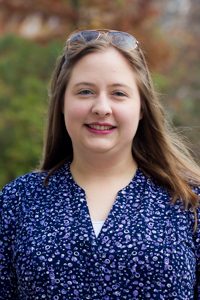 |
ADAPTIVE ANIMALS Brittany Adkins, Middlesex Elementary School, Nash-Rocky Mount Schools 4th Grade, Science 4 weeks, approximately 1 hour per day, 5 days per week Driving Question: How can we as 4th graders, predict adaptations of animals to fit new and changing environments? |
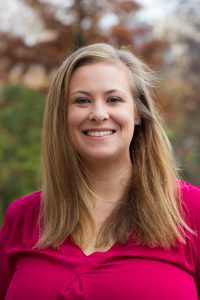 |
INSIDE OUT CLASSROOM Mary Beasley, Knightdale High School, Wake County 9-12 Agriculture (Horticulture and Natural Resources) 1 semester, daily time will vary Driving Questions: How can we promote outdoor use and conservation of our environment? How can we design and build an outdoor learning space that enhances the curb appeal of our school? Summary: Students will create a “sustainable” outdoor learning space on KHSCD campus, using resources that promote permaculture and least impact agriculture. This outdoor classroom will utilize an unused space on campus with low curb appeal. Our goal is to create a space that can be used as a classroom or collaborative space that will be used by all members of the KHSCD community. We will work with teachers to create garden plots that relate to specific objectives taught.Students will work as teams to design the outdoor classroom space and create scale blueprints at each step. Team designs will be presented to the class and the class will decide which elements will be a part of the final design. Once a final design is agreed upon by the class student teams will be assigned an area to become the lead design team of. These teams will be responsible for creating a plan of action and supply list. These action plans and supply list will be used by the team to present their element of the design to the Knightdale High School administration and the Business Alliance group to request funding/donations.A week of build and install will occur at the end of the project and the students will work to plan a grand opening event in which staff, students and parents will tour the outdoor classroom space. Links: Project Design, Project Outline |
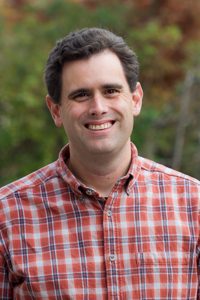 |
SERVICE AND ADVOCACY FOR ENVIRONMENTAL PROTECTION Jeff Deal, Knightdale High School, Wake County 11th-12th Grade 10 days (non-consecutive) Driving Questions: How can we, as KHS students, inspire and inform others about the benefits of conserving open space through action and advocacy? Summary: The Sarah and Bailey Williamson Preserve at Walnut Hill, located along the Neuse River at the Wake-Johnston county line, is a 405 acre property protected by Triangle Land Conservancy (TLC). In the upper third of the preserve there are two ponds that define the Environmental Corridor. Students participating in Knightdale High School’s Environmental Collaborative Workgroup are completing mini-service projects in the Environmental Corridor at Walnut Hill, and then will reflect on their work to connect their actions with our class content of sustaining clean water, fertile soils, and healthy habitat for diverse wildlife. Some of the service projects include trail construction, signage, planting understory food and herb plots, conducting a fish study, designing an amphitheatre meeting space, and more. Some of these will result in permanent installations that will improve the site for visitors, while other projects will be presented as prototypes to Triangle Land staff for possible action in the future. We kicked off the project with a visit to the land, and were greeted by George Jones, Senior Conservation Manager at Walnut Hill, who charged us with our task to adopt the Environmental Corridor. Students returned to school and went through several brainstorming protocols to imagine and refine their ideas, and plan the steps needed to execute their projects. We made two workday visits, with the first acting as a “rangefinder” to finalize plans, and second to complete actions. As the project is ongoing, a videographer is documenting our progress and interviewing students. The students’ written reflections will be published in a magazine format, and these two media artifacts will be publicly shared to advocate and promote the conservation work happening at Walnut Hill. We will celebrate our culminating event with staff from Triangle Land with a viewing party for our video. Some students will also able to present their work at TLC events in an expo table format. Links: Project Design |
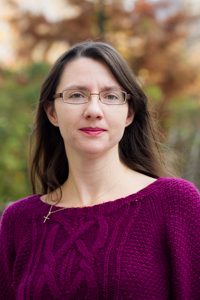 |
ENERGY EFFICIENCY Phoebe Sanders, St. Timothy’s School, Wake County 8th grade Physical Science Students learned about forms of energy and energy transformations during an earlier chemistry unit, but spent about fifteen 45 minute class periods revisiting the concept through a physics lens and working through this project. Driving Question: How can we as individuals/as a school use energy more efficiently? Summary: Learning began with hands on labs in which students made measurements and performed calculations to quantify work (energy use) and determine efficiency of simple machines. Students were then asked to identify wastes and frictions that remove energy from its intended goal in their daily energy use. Through a series of videos and a reading of the picture book version of “The Boy Who Harnessed the Wind”, the class considered varying viewpoints from around the globe and the need to conserve energy in the traditional sense despite the Law of Conservation of Energy. In groups of 4 to 5, students assigned a SCRUM Master and began research with the end goal of creating a presentation that includes a “call to action” from their target audience to improve energy efficiency. In order to facilitate the SCRUM ideal of completing small goals that lead to the larger end goal, I created a set of “forms” to break their research into the following components: identify waste, identify savings, and identify target audience which were completed collaboratively and used to inform their presentation. Students used post it notes on a poster board to assign and track tasks. A midpoint mini lesson including tips on writing effective “calls to action”. Research included tracing energy chains and considering avoidable losses due to inefficiencies in the way the energy is used as well as simple solutions to these problems. Many groups found that they needed to ask questions of various members of the school community in addition to online research. Student choice and voice were emphasized in this design which allowed students to choose from a variety of energy sources, an innumerable variety of specific ways this energy is used, the scope of the change they chose to address, and the type of presentation they created. |
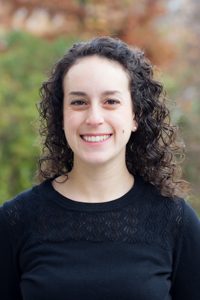 |
FOOD JUSTICE Michelle Siegel, Central Park School for Children, Durham County 4th Grade 9 Weeks, 90 minutes, 3 days per week Driving Question: How can we make nutritious food accessible to people living in food deserts in our region? Summary: At Central Park, we are surrounded by food: grocery stores, urban farms, and restaurants. However, our community includes pockets of food deserts, or places where nutritious food is not easily accessible. Fourth graders will research where nutritious food is accessible in our community and where it is not. They will do so by first learning about MyPlate and which food groups offer which nutrients. From here, they will examine which foods are grown in NC and build a meal based on these products. Students will take walking trips around downtown Durham to see where food is grown and purchased. On these trips, they will find the items to build their meals and record the costs. They will analyze the ease and cost of obtaining these foods after the trips.After analyzing the data collected about the availability and cost of these local products, students will read articles about purchasing local food and examine maps with census information of Durham County. These articles, maps, and field experiences will lead students to question who has access to nutritious food. Students will form opinions about how to best combat food deserts and share their opinions through writing. They will also learn how to lessen their impact by growing food in our classroom and developing seasonal, local recipes.Additionally, students will participate in the Food for Life program where they will receive lessons from an outside chef and learn how to prepare plant based meals themselves. Students will participate in the Steps to Health program offered by the state and taught by an Agriculture Extension employee. Links: Project Design |
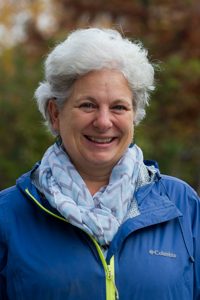 |
THE RIPPLE EFFECT Rachel Hearn, Sonja McKay, Callie Kirsch; Exploris Elementary School; Wake County 2nd Grade 8-Week Expedition Unit including science, math, writing, and Design for Change component.2.L.1 Understand animal life cycles 2.P.1 Understand the relationship between sound and vibrating objects. W.2.3 Write narratives [that] recount a well-elaborated event or short sequence of events, include details to describe actions, thoughts, and feelings, use temporal transition words to signal event order, and provide a sense of closure. NC.2.MD.10 Organize, represent, and interpret data with up to four categories. Driving Question: How do our actions, as North Carolinians, help and hurt the amphibians in our State? Case Study 1: Amphibian Needs (FEEL) Resources: Case Study 2: Threats to Amphibians Resources: Case Study 3: How We Can Help! (IMAGINE, DO, SHARE) Students collaborate in teams to design mini-pond frog habitats and present their ideas to school administration and community partners. (IMAGINE) Students break ground and help install the mini-pond and aquatic plants with community partners. Students plan ribbon-breaking ceremony to include placement of hand painted rocks, poetry reading, and tadpole release. (DO) Students share news and updates on the mini-pond, and original stories and poems on the FrogBlog. Students help gather data for FrogWatch USA Citizen Science. (SHARE) |
2017-18 Fellows’ Projects
 |
CONSERVATION EXPLORATION Sarah Knott and Julie Schmidt, Fellows, Ballentine Elementary School, Wake County 3rd Grade Science, ELA, Math 9 weeks, approximately 2 hours per day, 5 days per week Driving Question: How we can use water efficiently? Summary: Ballentine 3rd graders are investigating the importance of conserving clean freshwater around the world. In Expeditionary Learning Module 4, students are researching three issues related to water, specifically access to water, demands on water, and water pollution. Then, they will continue the study by writing an opinion essay about the importance of water conservation. Finally, as a culminating activity, they will plan and create a video public service announcement to educate people about their chosen water issue and to encourage them to take action with specific recommendations to solve the problem. Students will have the opportunity to interview and learn from Fuquay Varina Public Works personnel and from PBL mentor Kathy Wall’s fourth grade conservation expert students. By incorporating math measurement standards, students will have an opportunity to measure water usage in the school and home to see just how much of an impact saving a few drops will actually make. Links: Project Design , Student Work Videos |
 |
AIR QUALITY PBL Krista Brinchek and Sue Cole, Abbotts Creek Elementary School, Wake County Public Schools 5th Grade Science, Social Studies, ELA This project was completed through a Science Special Class over a several months. Classes were 45 min long. Driving Question: How Clean is Our Air? Summary: Through authentic learning, fifth graders learned how air quality can have environmental and health impacts on our school, city, state, and global communities. Students were first introduced to the topic of air quality during the 2017 California wildfires. Utilizing this current event, students discussed how it must feel to live near the wildfires, and how it might impact their health. This introduction was supported by technology with real-time fire, wind speed/direction and chemical concentration maps. We then asked our driving question; How clean is our air? To answer that, students had to first understand the properties of air to build a foundation to expand. Through extensive research, and understanding, students hypothesized that our carpool lanes at school would be impacted due to vehicle idling. Through a partnership with NC Clean Air, our class was able to obtain a purple air real-time air particulate monitor which was set up adjacent to the carpool drive through. Students monitored the air quality index maps daily comparing our site to other sites across the state. For the final culminating project, Abbotts Creek ES partnered with the Abbotts to display student’s presentations. 150 students working in teams completed posters, project boards, and pamphlets to display at the community center. This public product by students created an educational outreach to our larger community about the health impacts of air quality and tangible ways to improve it. Links: Project Design |
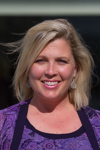 |
REDUCE AND RECYCLE Flora Sealey Palmer, Holly Ridge Middle School, Wake County 6th Grade Reading Enrichment Students 6 Weeks, 45 minutes, 5 days per week Driving Question: How can we, HRMS 6th graders, reduce waste and increase recycling in our cafeteria; in turn, benefiting the life of our town’s landfill, the South Wake Landfill? Summary: After brainstorming community issues, hearing Holly Springs Town Councilwoman Mrs. Cheri Lee speak, and participating in a Paideia seminar, students decided that they would like to make an impact in our school and community by determining ways we could reduce waste and increase recycling in our school’s cafeteria. Each student chose a focus group to take part in for the duration of this project. Groups researched the following topics: South Wake Landfill, share tables, biodegradable cafeteria supplies, composting, and recycling. They spent weeks researching, interviewing cafeteria personnel, and creating a product to share their findings. Our culminating event was attended by Mrs. Mountford, HRMS principal, as well as our cafeteria manager, Mrs. Barther. Groups shared their recommendations by presenting the information through a game, a brochure, t-shirt messaging, and PowerPoint presentation. Currently, we are awaiting a response from administration of how the students and I can implement their ideas to reduce waste and increase recycling in our school’s cafeteria. Links: Project Design |

|
EQUITY IN THE EVOLUTION OF THE US GOVERNMENT Dawnsa Smith and Leah Mahony – Central Park Middle School, Durham 5th Grade Social Studies and ELA 9 weeks – 5-6 times per week for 55 minutes Driving Question: How does the government structure work to meet the needs of all people? Does government structure evolve to be more equitable? Summary: Central Park 5th graders will learn about the origins of the US government, considering whose needs were addressed and whose were left out. So far this year, 5th graders have learned about the history of the United States considering how people groups gained power and what they did with with that power. The students also studied ways that people without political or economic power have joined together to powerfully resist oppression. In this context, 5th graders examined how the United States government came to be with the resistance of British rule, the American Revolution, and forming of the Constitution. We launched the project by having students imagine they were part of a group of 100 humans establishing a settlement on Mars. What would they need to be self-sustaining, and how would people organize themselves to have a functioning civilization? Next, students examined what was debated during the Constitutional Convention, and discovered that which people groups participated and which were left out. They are now in the process of preparing for a mock Constitutional Constitution of what it would have looked like if all people groups had been invited to the debate: white women, free African Americans, Native Americans, enslaved African Americans, and white workers/indentured servants. At the same time, they have dug into the meaning of the 10 amendments in the Bill of Rights, deciding through debate and voting which 3 amendments they would take to their Mars Colony. This process has motivated the students to understand the meaning of the rights protected in the Bill of Rights, thinking for themselves which they value most. As this phase wraps up, we will learn about the three branches of US government, how laws are made, and how the Constitution is amended. In ELA classes, the students will use nonfiction reading skills to research a current issue that is important to them (gun control, immigration, bias in government systems, animal rights, climate justice.) The students will use what they learn about these current issues and government structure to take on the role of all three branches of government: Executive, Legislative, and Judicial. This role play will be the culmination of our project. Each of our three Social Studies classes will each take on the role of one branch of government in order to pass a law. Based on student interests, this part of the project could go in three different ways:
The students will convene at different moments throughout the quarter to report their work and hand off the law to the next branch of government. Family, community members, and other grade-levels will be invited to view our process and pieces of student work. Ultimately, we will reflect on the role of government in and how it has historically protected or ignored rights of different Americans – and how the governmental process allows our government to constantly evolve to become more just for all. See more details in our evolving project design below. We are adding to it as we go. |
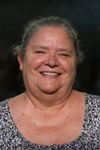 |
TAKING RESPONSIBILITY Jayne F. Young, Fellow; Scurlock Elementary, Hoke County 2nd grade pull-out high performing students 3 weeks, 2-3 times per week, approximately 40 minutes Driving Question: How can we as 2nd graders make our school safer by reducing stray animals on the Bear Campus? Summary: Scurlock 2nd graders explored the issue of strays that enter the open campus and how this population could be reduced. They researched types of pets and what proper care should look like. Students brainstormed questions that they still had and would want to ask guest speakers. By inviting community professionals (a vet, County Animal Control manager, and animal rescue volunteers), students learned about the work they did in the name of pets. Students concluded that responsible pet ownership is the permanent solution and decided to educate their neighbors by creating a Public Service Announcement. These 2nd graders were inspired to take their learning to the next level by conducting a service project supporting T.A.R.A, our local animal rescue group. Links: Project Design, Student Video |
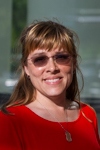
|
EARTH’S MANY FAULTS Cynthia Blake and Sarah Sprouse, Falls Lake Academy, Charter, Wake County 6th Grade Science and Social Studies 4-6 weeks Driving Question: How could you survive in a place known for major tectonic events? Summary: The earth is an ever evolving, ever active body that holds our past, present, and future in its depths. Because of the constant forces within, our pedosphere and the civilizations that have called it home, have been affected over the millenia. Although our location does not directly experience the impact of tectonic activity, our sixth grade students are challenged to understand how and why our planet is morphing. While it’s not difficult to get students excited about earthquakes and volcanoes, the challenge is getting them to to question how earth’s inhabitants can predict, prepare, survive, and rebuild after the destruction of such terrifying wonders.Social Studies class begins the discussion by detailing the events of Pompeii. A dramatic, time-lapse animated video shows the landscape on that fateful day in 75AD. The class discusses the experience of people in that area would have experienced using all five senses. We evaluate what helped people survive and what killed them. We examine daily life in ancient Pompeii through a video about the excavation of the ruins. Students choose characters, including Roman names and work identities, and begin developing a narrative of that person’s experience and escape.In science, students must ultimately understand the mechanisms of the three boundary types and how they yield a host of recognizable effects. Thus, students begin by creating an interactive research booklet about these to use during the PBL process. Groups are then given a random list of the world’s most geologically active locations. Each city is explored. Students must then select one of those places to thoroughly research and defend their choice. They design and build a detailed model to show the prevalent tectonics at their chosen location. However, the real learning comes when students have to generate their own line of questioning, to ferret out in depth information beyond ‘how big?’ or ‘how many?’ Safety measures, evacuation plans, technological warning systems, effects on the economy or ecosystems, wildlife, building designs, the effects on drinking water or cash crops. These can be the roads in which they find themselves, if guided. If you can entice them to think beyond, they’ll go father than any volcano can send them. That is the journey that is most rewarding. Links: Project Design |
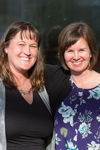 |
MUSIC AROUND THE WORLD Erica Wilmer and Jennifer Carson, Grady Brown Elementary School, Orange County 2nd Grade Social Studies, Science, and ELA 5 weeks, 40 minutes per day Driving Question: How can we celebrate diversity through music? Summary:Students learned about world cultures through music exploration and online and in-house resources including: This is Home – Google Earth, Putumayo music, and videos and books that built understanding of diverse cultural experiences. Specific regions and people of the world included: the Andes in South America; India, China, and Japan; and the Maasai tribe of Kenya and Tanzania. Students rotated each week, making instruments and playing music from the highlighted regions. After students completed rotations, they chose an instrument to engineer with donated materials as well as using supplies from the school’s makerspace. Students worked with a partner to design and build their instrument, which was on display during the school’s annual science night. Students wrote descriptions of the instrument and included the country or continent of origin and how it is played. Links: Project Design |
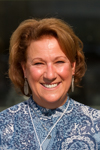 |
BIRDS OF PARADISE Kathy Wall, Mentor, Ballentine Elementary, Wake County Public Schools 4th Grade Science, Social Studies, ELA 3 weeks, approximately 60 minutes per day, 5 days per week integrated across curriculum Driving Question: Can birds help our community? Summary:Fourth grade students go on a journey to learn how birds currently and historically have played a role in human lives. Students explored human relationships to earth and how humans impact the earth both positively and negatively. Through research, writing, teaching, and a hands on project students learned how scientist study birds to benefit the earth’s ecosystems. Students learned that birds connect to earth’s history in fossils, and that birds are bioindicators of healthy environments. Birds and nature are also used by past and current scientist and engineers when developing and designing innovative ideas. In addition students learned that the environment plays a role in their personal health. By building a Bluebird Trail at our school we hope to provide a healthy place for birds and encourage teachers and students to get outside and build student curiosity and participate in nature. If all goes as planned this Bird Trail can positively add to our school community with lifelong conservation implications. Links: Project Design |
 |
GOING VIRAL Shannon Hardy, Jessie Francese, Cori Greer Banks, Remi Wingo; The Exploris School, Charter, Wake County 8th Grade 12 weeks Driving Question: How does diversity make us stronger? Summary: Essential Questions:
In the 1780’s the U.S. forged ahead with a new identity, but early leaders were struggling with inclusivity and freedom for all of America’s inhabitants. After the Civil War, the United States kept the country together, but were now wrestling with Jim Crow Laws. Has this changed in 2017? Students will imagine the possibilities through reading a variety of literature, simulating a zombie pandemic, and learning about microbes. Sociologist Malcolm Gladwell poses a bold theory, social thought does not change over time. Instead, Gladwell suggests that while individuals might change, societies will sustain current beliefs long after laws and leaders pursue change. Regardless of morality, the new idea may incubate in small circles, but it takes a spark to propel society to spread that idea like a virus until it reaches critical mass, causing a tipping point for a new moral code. In order to test Gladwell’s Theory, this expedition digs deeply into the microbial world’s function and impact on society. What is the impact of disease and how does it spread? Are there good microbes and bad ones? What causes the change? How can we relate this process to the United States’ long struggle with social justice? What are the specific tipping points when long-held ideas suddenly go viral and finally, how does divergence contribute to a healthier environment for the planet and its inhabitants? |
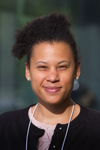 |
ACTION TO SUSTAIN Danielle Cunningham, Falls Lake Academy, Granville County 8th Grade Science 4 weeks, approximately 45 minutes one day a week, 4 class periods Driving Question: How can you provide environmental stewardship to our community? Students will scientific investigate the air, water and soil quality to understand the importance of these raw materials and identify ways to improve the misuse of these resources. Summary:Falls Lake Academy students will analyze renewable resources in Granville County. Students will research the current environmental problems and brainstorm sustainable goals that can change the local county’s current pollution problems. Through this simulation students will go on a field trip to the water treatment plant, have guest speakers, design models, and investigate ways to enhance their community. During this PBL students will make connections about the way science intersects with society and ways to reduce risk that impact life on Earth. Links: Project Design |
 |
IF WE BUILD IT… Erin Linn, Central Park School for Children, Charter, Durham County 3rd Grade 12+ weeks Driving Question: What can we as third graders build to bring people together? Summary:My students have a natural curiosity and inclination to build things, using whatever materials are available. This year they’ve built things using Legos, magnetic tiles, paper, cardboard, tape, and random supplies like egg cartons and plastic containers. Most of what they’ve made has been interesting for a moment, but the enthusiasm for and quality of the product hasn’t lasted. I wanted to create a project where my class could build something that would last. Knowing that I had to teach the science of motion and energy, I coupled that learning with an exploration of structures in our nearby community and a series of guest expert discussions so my students could learn the value of building things that are made to last. We also discussed some needs for new structures in our school community and settled on the need for a place kids can come to when they’re feeling lonely, want to make new friends, or are experiencing conflict. We settled on the idea of a bench or sitting area, much like the “Buddy Bench” system. We learned how to design and build models using cardboard and clay framing, with poured plaster as our medium. The kids put together scenes with the bench, ground, and even some trees and bird baths.We plan to post pictures and descriptions of each model so that the rest of the school community can give feedback in order to help us refine and choose what elements of bench design we should keep for our final build. After that, we have “hired” a landscape architect to create a construction detail drawing of the bench which we will pass off to our “hired” sculptor. The sculptor will build the frame and reinforcements here at school in our art studio so that the kids can observe the process. Then we will pour the concrete, let it set, and remove the frame. Until we get approval from Durham City Parks and Recreation, we will keep the bench on our school property. When we have approval, we will install the bench in Old North Durham Park, where we play each day at recess. We will teach the rest of the school how the buddy bench works, and will hopefully have created a space where students will find companionship for years to come. Stay tuned! Links: Project Design |
 |
FOOD MATTERS Morgan Carney, Central Park Middle School, Charter, Durham County 6th Grade Science, Social Studies, ELA, Math 20 weeks, amount of time varies in different classes Driving Question: Can we change the world by changing what we eat? Summary:During the first semester of sixth grade, students explored the question, “Can we change the world by changing what we eat?” Students examined the impact food production and consumption has on our community and our world, dove into topics about ecology and the environment, explored social concerns including food scarcity/deserts and migrant farmworkers’ rights, learned about the history of ancient agricultural technology, and applied the many ways that ratios, decimals, and other mathematical concepts fit into the way we eat. In science, students explored ecosystems and biomes, botany and flowering plants, soil and land stewardship, and concepts of heat transfer through cooking. Social studies classes looked at the rise of civilizations in the Middle East and northern Africa based on their access to food and animal sources, as well as tools that geographers use to examine population growth and timelines. In language arts, students read Esperanza Rising and participated in literature circles, reading books such as Omnivores Dilemma, World Without Fish, and Seedfolks. At our culminating event at the Durham Armory, students created displays featuring their knowledge on food-related expert topics from sustainable seafood to farmworkers rights, community partners involved in food set up informational tables, and students discussed the knowledge they had developed to share sustainable food practices with Durham and beyond. Links: Project Design, Project Calendar |
2016-17 Fellows’ Projects
 |
THE RIPPLE EFFECT Shannon Russell Hardy, Mentor, The Exploris School, Charter, Wake County 8th Grade Science, Social Studies, ELA 4 weeks, approximately 45 minutes per day, 4 days per week Driving Question: How we can secure the right to safe, clean, accessible, and affordable water for all humans? Summary: Exploris 8th graders investigated how our democratic ideals have impacted local, NC, and federal water policy. They dug deep on issues including stormwater runoff, urban wetlands, the deregulation of Falls Lake, and the impact of flooding from Hurricane Matthew. Students used the process created by Design for Change to explore how scarcity and the unequal distribution of water impact us. They sought to answer the question, “How can we secure the right to safe, clean, accessible, and affordable water for all humans?” They carefully documented research, transcribed content, and filmed video. Through interactions with industry leaders, politicians, and environmentalists, students analyzed the monetary, environmental, and social cost of water. They imagined possible futures, developed solutions, and executed a change of their own design. Links: Project Design , Expedition Overview |
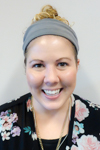 |
WE ‘RIVERLY’ NEED THEM! Lauren Boop, Fellow, Hilburn Academy, Wake County 6th Grade Social Studies 2 weeks, approximately 90 minutes per day, 5 days per week, 10 class periods Driving Question: How can we, as historians and scientists/potamologists, create exhibits that showcase the detrimental effects of life without rivers and/or clean rivers? Summary: Hilburn Sixth Grade Social Studies students will do a comparative analysis case study between Ancient Civilizations and North Carolina today on the reliance on rivers to support a society. Through hands-on inquiry, design models, public service announcements and investigations, students will make connections about what life would be like without rivers in both ancient societies and today’s world through a pop-up museum display. Through their analysis, students will determine what next steps need to be taken to help protect NC rivers and why these next steps are necessary for a thriving community. Link: Project Design |
 |
SPECIAL CONCERN SPECIES INVESTIGATION Jennifer Browndorf, Fellow, Hilburn Academy, Wake County 6th Grade Science & 6th-8th Grade Animal Science 4 weeks, approximately 90 minutes every other day, 2-3 days per week Driving Question: How can we, as environmental citizens, create a product to educate our community about issues and solutions to improve the status of wildlife listed as NC species of special concern? Summary: “In nature, nothing exists alone.” ~Rachel Carson Hilburn 6th-8th graders investigated how wildlife resource management decisions have impacted local animal species. They dug deep on issues of wildlife policy in NC, on urban & suburban fragmentation, on status of species of special concern in our local natural communities, and on the impact of the Wildlife Action Plan for NC. Students used the processes of PBL to explore how threats to natural communities impact animals. They sought to answer the question, “How can we, as environmental citizens, create a product to educate our community about issues and solutions to improve the status of wildlife listed as NC species of special concern?” They carefully documented research, designed augmented reality auras, transcribed content, and created artifacts. Through interactions with the Wildlife Action Plan, NC Wildlife Resource Commission, and Piedmont Wildlife Center, students analyzed the environmental impact of human decisions. They became hopeful for better futures, advocated for solutions, and educated the community through their own museum product design. Link: Project Design |
 |
HOW HEALTHY IS OUR WATERSHED? Meg Millard, Fellow, Central Park School for Children, Durham County 4th Grade Science, Social Studies, ELA 8 weeks, 3-5 times a week for 1 hour, additional field work and guest speakers Driving Question: How can we, as 4th graders, convince our friends and families to reduce their environmental impact on our watershed? Summary: Central Park 4th graders will explore and learn about the watershed in which we live. They will have first hand experiences along the streams and rivers of the Neuse River watershed. These experiences will include Ellerbe Creek, a 2 day trip to the Eno River, paddle canoes around Falls Lake, and explore the Cliffs of the Neuse State Park (where they will release shad fry). Students will have opportunities to talk with biologists, both at school and at their places of work, to learn more about our watershed and some of the threats to the water and wildlife. Organizations such as the North Carolina Museum of Natural Sciences, the North Carolina Wildlife Resources Commission, The Eno River Association, and the Ellerbe Creek Association, as well as state parks within the watershed will be utilized for expert assistance, advice, information and for field work. Additionally, we will raise American Shad and learn about their life cycle and historical population changes, and how changes to the watershed have affected this species. Environmental impacts affecting the Neuse River watershed will be explored and considered as we investigate the historical changes to shad populations. Students will consider ways they can help shad (and other wildlife) and how they might influence others to help protect and preserve our watershed and wildlife in our area. We will explore ways that human impacts on the watershed can be reduced. Students will then work in small groups to design ways to encourage their friends and families to work at reducing their impact on our watershed (some of which could include leaving a buffer between tilled areas and streams, using biodegradable soaps, volunteering with local organizations such as the Ellerbe Creek Association to help with clean ups, not using herbicides and pesticides around their yards, planting native plants,…) Link: Project Design |
 |
WATER WISE Kathy Wall, Fellow, Ballentine Elementary , Wake County 4th Grade Science, Social Studies, ELA 8 weeks, 3-5 times a week for 1 hour, additional field work and guest speakers Driving Question: How can we, as 4th graders, convince our friends, families, and the community of Fuquay-Varina to reduce their environmental impact on water? Summary: Ballentine 4th graders will explore and learn where their water comes from and discover that it is a limited resource. They will learn that our population is increasing, and as our population increases the need for clean water will increase. Students will learn that community members need to preserve and conserve the water in our water supply. Learners will have first-hand experiences from volunteers from the Climate Reality Project, The Center for Human and Earth Restoration, and the City of Fuquay’s Public Works Director. These experiences will include taking information from the Climate Reality Project and making solar fans, solar ovens and a solar car. Students completed research on how climate change is effecting wildlife and weather. Students will also have an opportunity to make biospheres in jars and observe and create investigations on the organisms in the biosphere. Students will test how every day products we put in the water effects the water quality. Soaps, toothpaste and detergents will contaminate the water leading students to be conscientious of what we put in our water. Students also had an opportunity to interview and learn from the Public Works Director of Fuquay-Varina. Students learned that Fuquay-Varina purchases water from the City of Raleigh and Harnett County. They learned that the school and students living in the city purchase water collected from the Neuse River Basin and the Cape Fear River Basin. They learned water has to be treated and distributed to their homes. Students made models of the distribution and learned how our water quality has changed over time. The students learned that water has to be treated with chemicals so it is drinkable. This raised a lot concerns. During this time Chapel Hill had a water crisis and our town was changing the process of how our water was treated so there was a noticeable smell in the water. The Public Works Director emphasized that one of the best ways students could help the distribution of water was to not pollute the water and reduce the amount of water that we use. Students considered ways in which they could reduce the amount of water they use, and save money. Students then worked in small groups to design ways to encourage friends, family, and the community to reduce the amount of water we use and preserve our water resources. Together students are coming up slogans and advertisements to encourage citizens to use less plastics by using reusable water bottles and straws, reducing the amount of water used by either efficient toilets or getting water displacement objects in the back of toilets, and by taking shorter showers and turning off the water when brushing our teeth. Collectively we are making Fuquay-Varina Conservation Baskets with stickers, shower timers, reusable straws, and toilet tanks. Students will possibly present their presentation and gift baskets to other students in our school, a local service club, and representatives from the town of Fuquay. Possible slogans for the gift baskets are welcome to Fuquay-Varina, “a community that uses a dash less water and makes a dash less trash.” Link: Project Design, Elementary School Science Students Tackle Conservation |
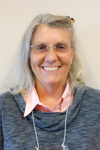 |
KEEP SOIL WHERE IT BELONGS! Rose Syroid, Fellow, Horton Middle School, Chatham County 6th Grade Science 3 weeks, approximately 45 minutes per day, 5 days per week Driving Question: How can we as 6th graders decrease the amount of sediments that negatively affect our drinking water supply and beautify our campus at the same time? Summary: Students create water gardens and reroute water from impermeable surfaces into rain barrels. Students learn the consequences of erosion, deposition and how to be stewards of clean water. Students work in teams to research and develop sustainable improved run-off solutions on campus. The end result is keeping sedimentation out of storm drains and ultimately drinking water. Also, Students work to beautify the campus as well as correct erosion issues that are compromising a walkway. Link: Project Design |


